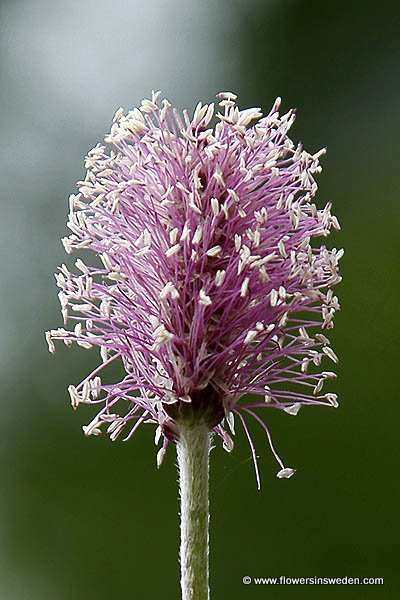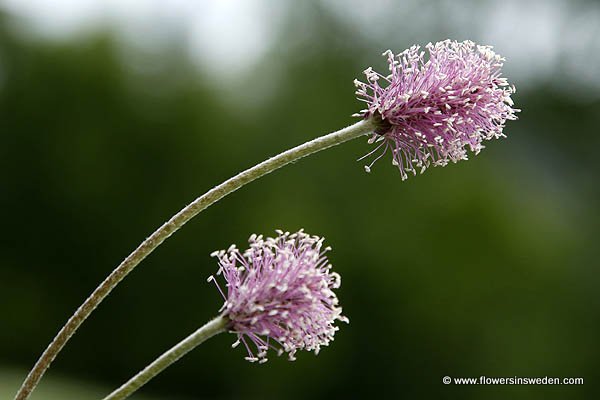|
|
| Life form: |
| Perennial |
| Stems: |
| Erect, leafless, unbranched, flowering stems (scapes); short and densely haired scape especially at top, and terminate in a cluster of small, inconspicuous flowers |
| Leaves: |
| Basal rosette, broad, oval leaves narrowing to a short stalk |
| Flowers: |
| Spiciform, cylindrical, 2-9cm in lenght; corolla pink, white with ovoid pointed lobes, hermaphrodite |
| Flowering Period: |
| May, June, July |
| Fruits: |
| Cylindrical fruit capsules about 0.6mm long and split across the lower half into 2 unequal cells containing 4 to 10 dull black seeds. Seeds are larger and smoother than those of broadleaf plantain and have a scar near the center on one side |
| Habitat: |
| Throughout the country, most common in limestone areas; it grows in open fields and meadows |

Derivation of the botanical name:
Plantago, plantagin (stem), a "plantain".
media, in the middle, between; intermediate.
- The standard author abbreviation L. is used to indicate Carl Linnaeus (1707 – 1778), a Swedish botanist, physician, and zoologist, the father of modern taxonomy.
|


